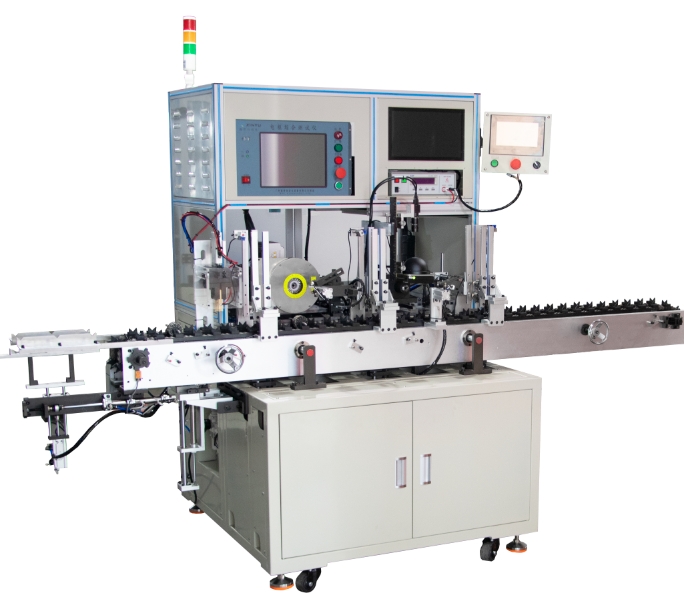Motor motor automatic rotor test vision machine how to carry out maintenance?
Motor motor automatic rotor test vision machine maintenance work is critical, related to the performance, accuracy and service life of the equipment. The following from a number of aspects for you to introduce specific maintenance methods:
First, daily cleaning
Appearance cleaning: use a clean, soft cloth to wipe the shell of the equipment, clear away dust, stains. For stubborn stains, you can use a neutral cleaner to gently wipe, but to avoid liquid into the interior of the device.
Optical components cleaning: vision system camera lens, light source and other optical components are easy to stain the dust, affecting the imaging quality. Use special lens paper or dust-free cloth to gently wipe the lens, in accordance with the spiral direction from the center to the edge, to avoid scratching the lens surface. For the light source, check its surface regularly for dirt, if any can be wiped with a clean cloth.
Sensor cleaning: Position sensors, pressure sensors and other surfaces may have dust, iron filings and other impurities that affect the accuracy of the sensor. Use compressed air to blow away impurities on the surface of the sensor, or use a clean brush to gently brush away.
Second, mechanical parts maintenance
Lubrication: the moving parts of the equipment, such as rails, screws, chains, etc. need to be lubricated regularly. According to the requirements of the equipment instruction manual, select the appropriate lubricant or grease. For guide rails and screws, lubricant is generally used for lubrication, which can be injected into the lubrication point using a grease gun; for chains, grease can be applied.
Fastening: Regularly check whether the screws, nuts and other connecting parts of each part of the equipment are loose. Especially the connection parts of the moving parts, such as the connection between the motor and the transmission mechanism, and the connection between the fixture and the worktable. Use the appropriate tools to tighten the loose connections to prevent unstable operation or failure of the equipment due to loosening.
Calibration: Regularly calibrate the mechanical accuracy of the equipment, such as the flatness of the working table, the straightness and perpendicularity of the moving parts. Use professional measuring tools, such as micrometer, laser interferometer, etc. to measure and calibrate. If the accuracy is found to be out of tolerance, it should be adjusted and repaired in time.

Third, the electrical system maintenance
Check the line: Regularly check whether the electrical lines of the equipment are broken, aging, loose and so on. Especially the power line, signal line and other key lines, to focus on checking. For broken lines, it should be replaced in a timely manner; for loose joints, it should be re-tightened.
Clean electrical components: Electrical components in the electrical control cabinet, such as contactors, relays, circuit breakers, etc. will adsorb dust, affecting their heat dissipation and performance. Use compressed air to blow away the dust on the surface of the electrical components to keep the electrical control cabinet clean.
Detecting electrical performance: Use multimeters, insulation resistance testers and other instruments to test the voltage, current, insulation resistance and other parameters of the electrical system on a regular basis to ensure the normal operation of the electrical system. If abnormal parameters are found, the cause of the failure should be investigated and dealt with in a timely manner.
Fourth, software system maintenance
Backup data: Regularly back up the test data, configuration parameters and other important information of the equipment to prevent data loss. Data can be backed up to external storage devices, such as removable hard disk, USB flash drive, etc..
Software update: Pay attention to the software update information released by the software developer in time, and update the software according to the requirements. Software updates can fix software vulnerabilities, improve software functions, and enhance the performance and stability of the device.
Virus protection: Install antivirus software and firewalls to protect the software system of the device from viruses. Regular virus scanning of the software system to prevent virus infection leading to software failure or data loss.
V. Environmental Maintenance
Temperature and humidity control: the equipment should be installed in a temperature and humidity suitable environment. In general, the temperature should be controlled between 20 ℃ - 30 ℃, relative humidity should be controlled between 40% - 60%. The temperature and humidity of the environment can be adjusted by installing equipment such as air conditioners.
Dust and moisture prevention: The working environment where the equipment is located should be kept clean to avoid dust, moisture, etc. from entering the inside of the equipment. Dust-proof covers can be installed around the equipment and important parts such as electrical control cabinets can be sealed to prevent dust and moisture from intruding.
Avoid vibration and interference: the equipment should be installed in a place far away from the source of vibration and electromagnetic interference sources, such as large machinery and equipment, transformers and so on. If vibration and interference can not be avoided, vibration damping measures and electromagnetic shielding measures can be taken to reduce the impact on the equipment.
※: If you still can't solve the equipment failure through the above ways and means, please contact the technical specialist of Xinhui Electromechanical Equipment Co., Ltd. through the page chat tool to seek help.







